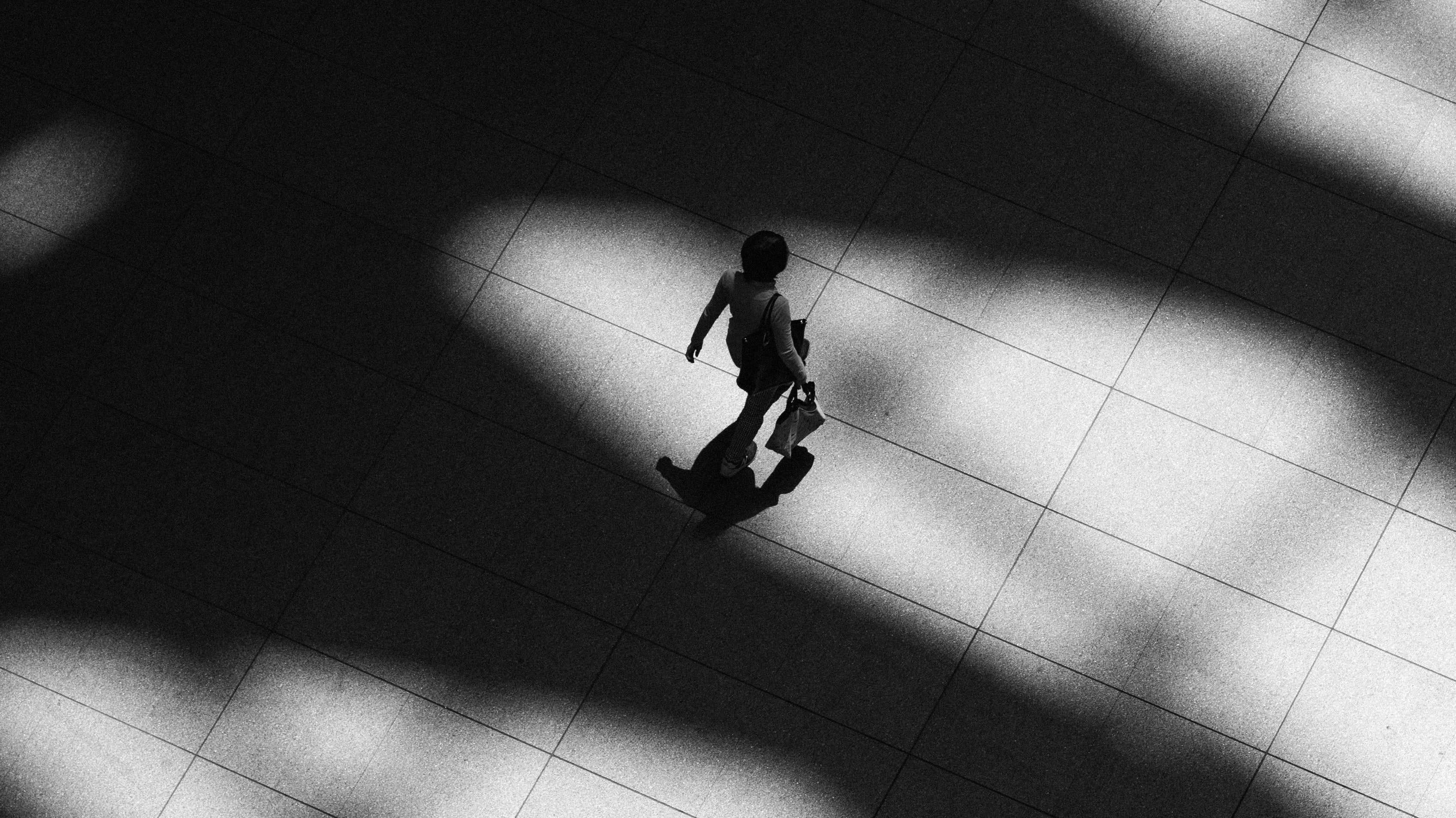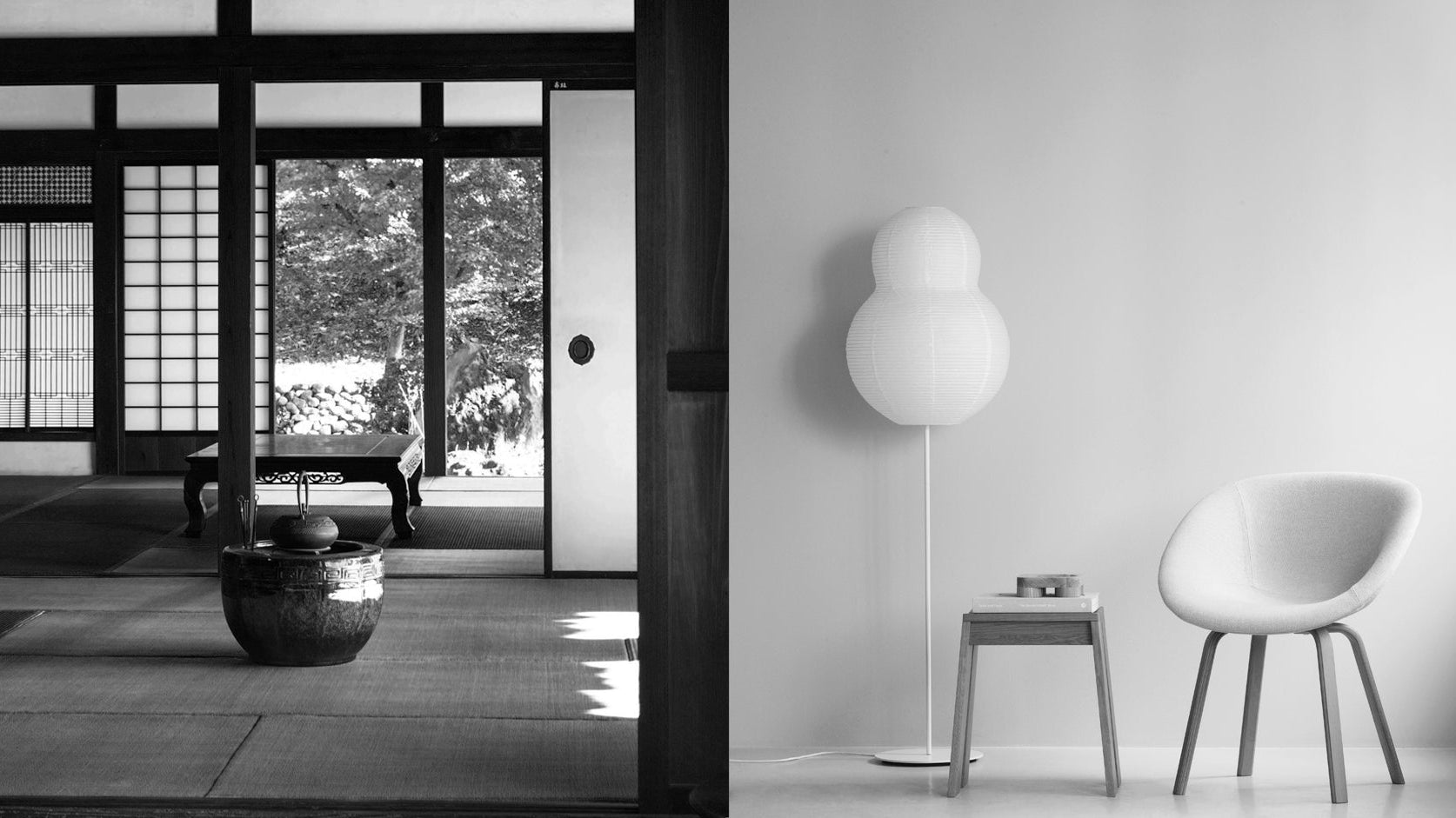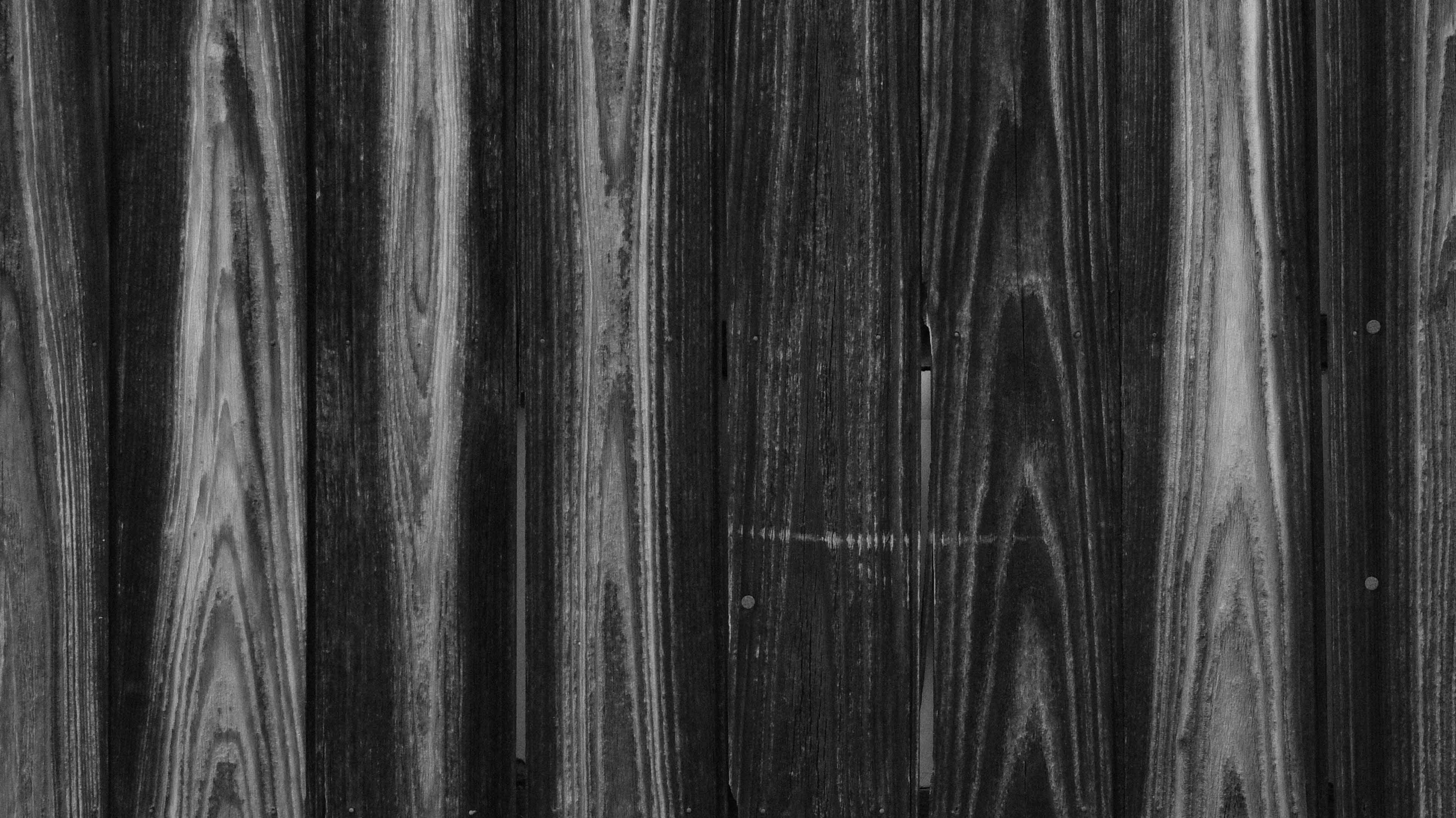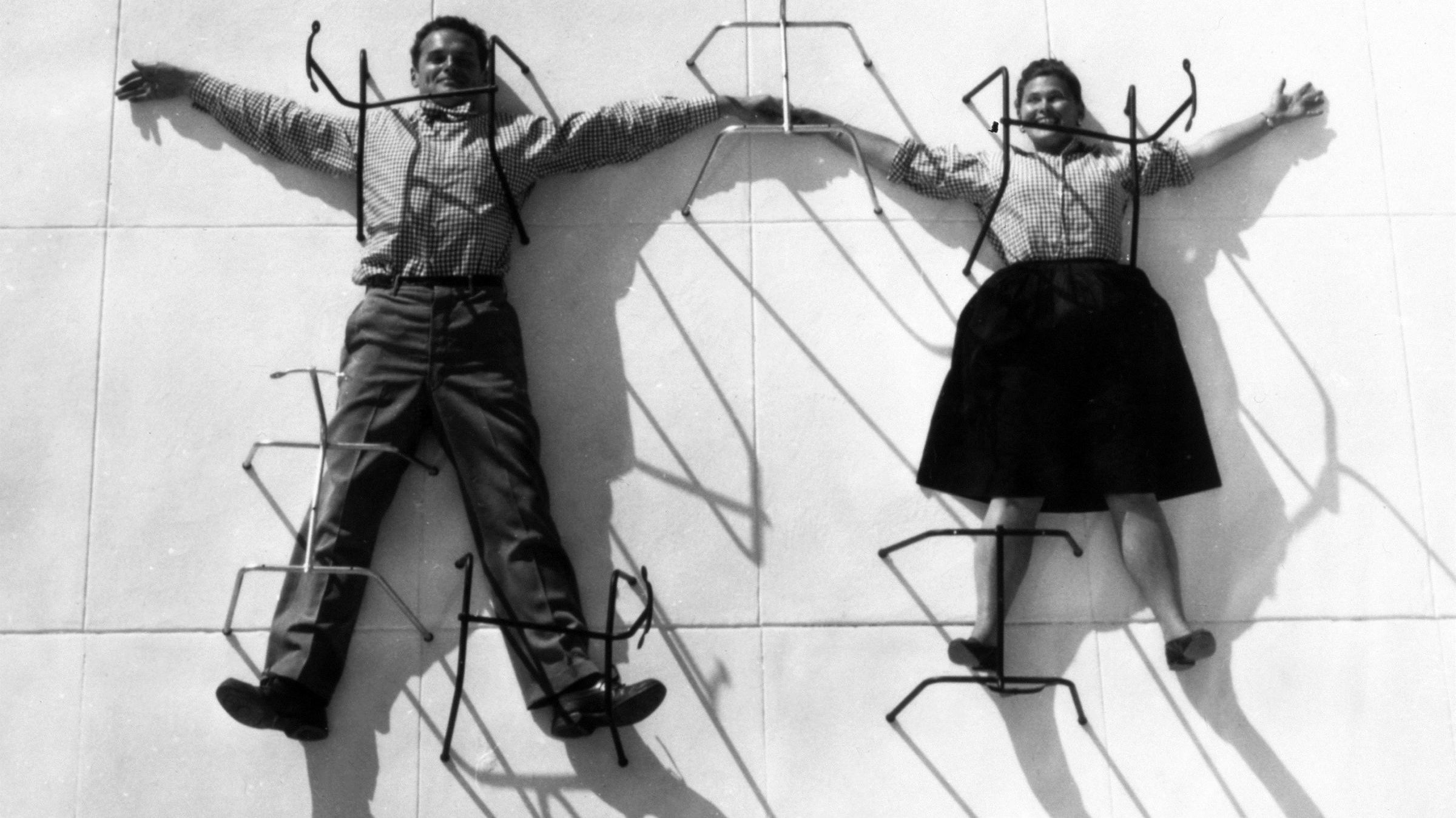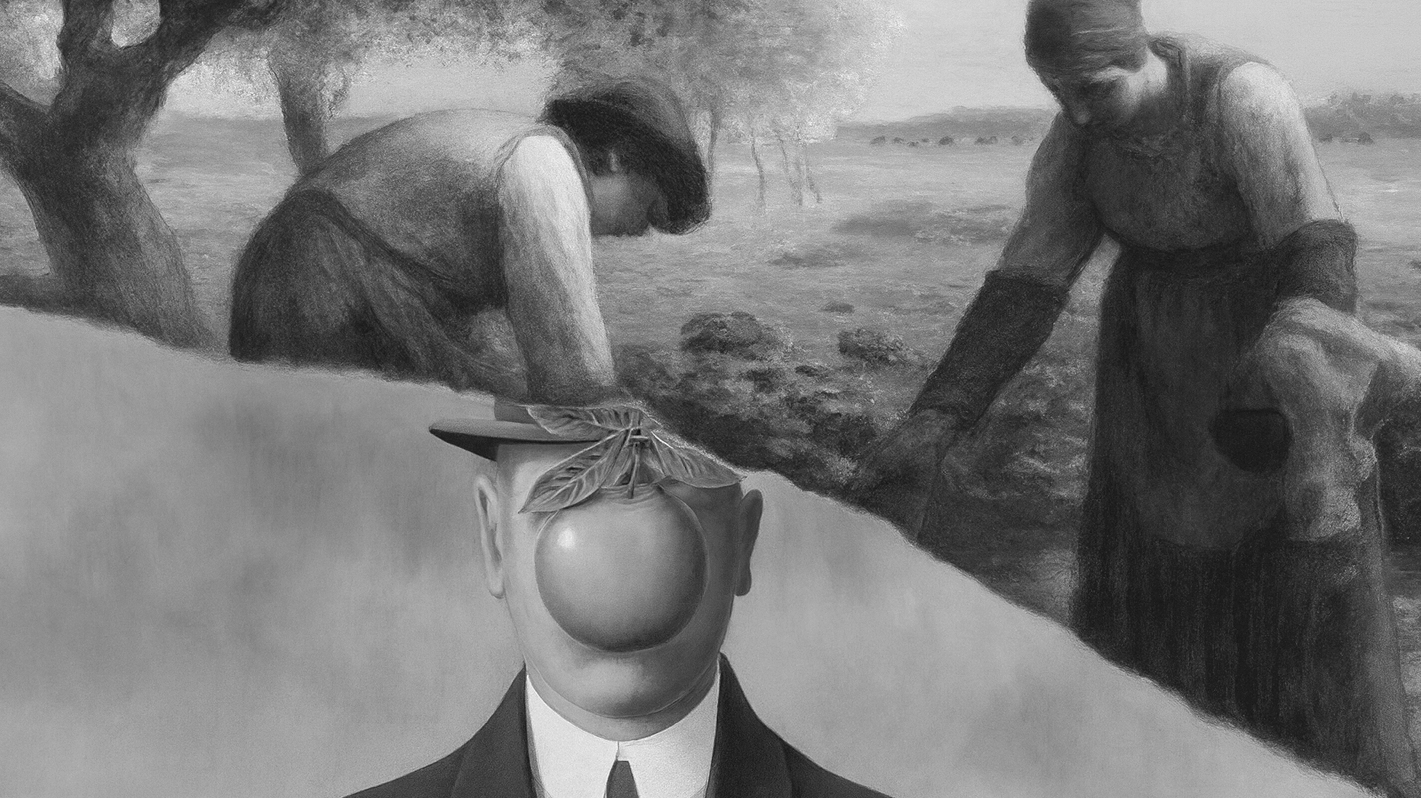Japanese art is abundant with symbolism, found in both traditional and modern designs. These symbols are not merely decorative elements; instead, they hold deep poetic and philosophical meanings that have been cultivated and treasured for centuries. In this article, we are going to introduce you to 5 important symbols in Japanese art and share their meanings.
(Japanese Art Symbols: Hidden Meanings in 5 Important Symbols - dans le gris)
(Japanese Art Symbols: Hidden Meanings in 5 Important Symbols - dans le gris)
Why Symbols Are Important In Japanese Art?
(Japanese Art Symbols: Hidden Meanings in 5 Important Symbols - dans le gris)
Before introducing the five symbols in Japanese art, it's essential to understand that, in Japanese art, symbols serve as powerful tools for conveying meaning and depth. Symbols are an integral part of the cultural landscape, reflecting the deep philosophies and beliefs that have shaped Japanese society over time. These symbols encapsulate a wealth of cultural and historical significance, embodying essential concepts, myths, and events from Japan's folklore and past.
Furthermore, symbols in Japanese art facilitate indirect and subtle communication. Rather than showing everything outright, symbols add depth, inviting viewers to interpret and connect with the artwork on a personal level. This inherent subtlety encourages a profound level of exploration and fosters a personal connection between the viewer and the art.
(Japanese Art Symbols: Hidden Meanings in 5 Important Symbols - dans le gris)
5 Important Symbols in Japanese Art
(Japanese Art Symbols: Hidden Meanings in 5 Important Symbols - dans le gris)
Below, let's explore 5 of the most important symbols found in Japanese artworks. The next time you encounter these symbols and their meanings in Japanese art, they might help you understand the hidden stories behind the art.
(Japanese Art Symbols: Hidden Meanings in 5 Important Symbols - dans le gris)
1. Cherry Blossom

Katsushika Hokusai, Mount Fuji with Cherry Trees in Bloom, 1795–1810
(Japanese Art Symbols: Hidden Meanings in 5 Important Symbols - dans le gris)
Speaking of flowers in Japan, we might think of cherry blossoms right away. It is not only the most recognizable symbol in Japanese art, but also a symbol of the nation. The cherry blossom is an iconic and cherished symbol that represents the transient nature of life, beauty, and the arrival of spring. Within Japanese culture, the eagerly anticipated and celebrated cherry blossom season serves as a unifying force, bringing people together in joyful harmony.
The delicate and ephemeral nature of cherry blossoms is often associated with the appreciation for the impermanence of things. The symbolism of cherry blossoms extends beyond their physical beauty to contain deeper philosophical and emotional concepts. The cherry blossom reminds people to cherish the present moment, embrace the fleeting nature of life, and find beauty even in its transience.
(Japanese Art Symbols: Hidden Meanings in 5 Important Symbols - dans le gris)
2. Carp
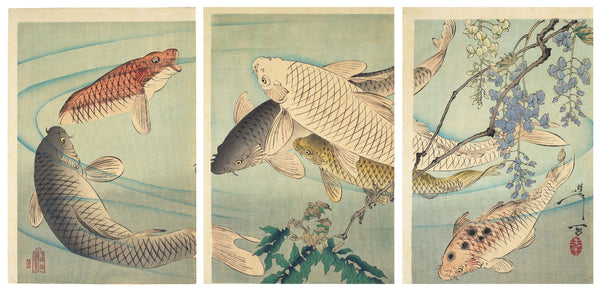
Tsukioka Yoshitoshi, Carp swimming below a hanging wisteria vine 1889
(Japanese Art Symbols: Hidden Meanings in 5 Important Symbols - dans le gris)
The carp, known as "koi" in Japanese. It is a revered symbol representing strength, resolution, perseverance, and good fortune. In Japanese culture, people admire the carp for its skill to swim against powerful currents. This ability is seen as a metaphor for overcoming challenges and attaining success. As a result of this characteristic, the carp has come to be related with qualities such as resilience and perseverance.
Furthermore, the symbolism of the carp holds particular significance during the celebration of Children's Day. On this day, families raise colorful carp-shaped windsocks to celebrate and wish for the success and well-being of their children. The display of these carp streamers represents the hopes and aspirations parents hold for the future of their children.
(Japanese Art Symbols: Hidden Meanings in 5 Important Symbols - dans le gris)
3. Pine
(Japanese Art Symbols: Hidden Meanings in 5 Important Symbols - dans le gris)
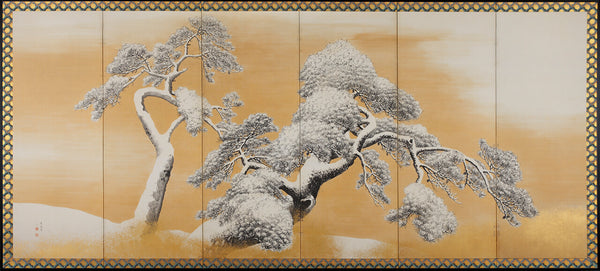
Maruyama Okyo, Pine trees in snow, Edo (Circa 18th century)
(Japanese Art Symbols: Hidden Meanings in 5 Important Symbols - dans le gris)
The evergreen pine, with its enduring roots and vibrant needles, symbolizes faithfulness and strength. Additionally, the pine tree's remarkable ability to withstand challenging weather conditions, such as strong winds and cold winters, contributes to its high value and esteem in Japanese culture.
In ancient times, people would tie ribbons to pine branches as a way of offering prayers for safety and long life. Consequently, the pine tree came to symbolize longevity, further enhancing its significance in Japanese culture. In art, the pine tree is often depicted in various forms, including paintings, woodblock prints, and bonsai sculptures. These artistic depictions highlight its distinctive, gnarled branches and elongated needles, evoking a profound sense of strength and character.
(Japanese Art Symbols: Hidden Meanings in 5 Important Symbols - dans le gris)
4. Crane
(Japanese Art Symbols: Hidden Meanings in 5 Important Symbols - dans le gris)
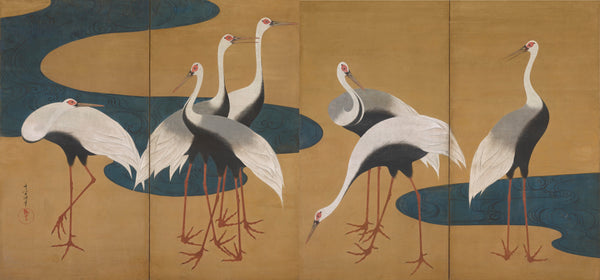
Suzuki Kiitsu, Cranes, Edo period (1615–1868)
(Japanese Art Symbols: Hidden Meanings in 5 Important Symbols - dans le gris)
Renowned for their noble elegance, cranes are regarded as mystical birds that hold great significance in Japanese culture. They are considered sacred creatures, symbolizing a profound connection to the spiritual realm. In spite of its symbolic significance, the crane is a popular motif in various art forms such as paintings, sculptures, and origami.
In Japanese art, the crane is often depicted with grace, elegance, and long outstretched wings. It symbolizes various positive attributes, including good fortune, longevity, peace and loyalty. The crane's ability to soar high in the sky. It is associated with spiritual elevation and the transcendence of earthly constraints. In addition, Cranes are commonly featured in traditional Japanese weddings, as they symbolize an enduring union and harmony.
(Japanese Art Symbols: Hidden Meanings in 5 Important Symbols - dans le gris)
5. Mount Fuji
(Japanese Art Symbols: Hidden Meanings in 5 Important Symbols - dans le gris)
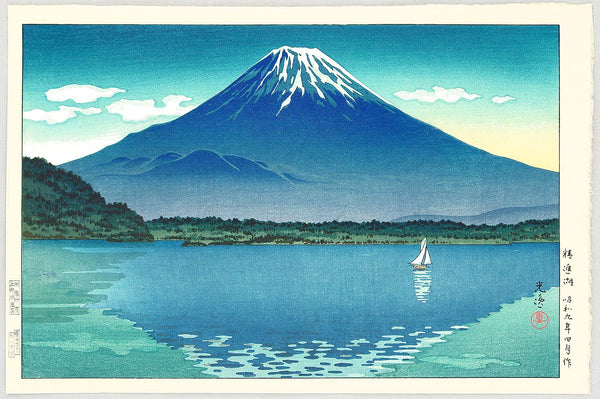
Tsuchiya Koitsu, Shoji Lake (Mount Fuji), 1934
(Japanese Art Symbols: Hidden Meanings in 5 Important Symbols - dans le gris)
Mount Fuji, is an iconic mountain that holds a significant place in Japanese art and culture. With its majestic conical-shape and breathtaking beauty, Mount Fuji is considered a sacred mountain and has deep spiritual associations. It has been a place of inspiration and pilgrimage for numerous artists, poets and spiritual seekers who want for enlightenment and a closer bond with the natural world.
Besides, Mount Fuji has become a powerful symbol of Japanese identity. It is widely recognized both within Japan and internationally as an emblem of the country's natural beauty, resilience, and cultural heritage. The symbolism of Mount Fuji in Japanese art reflects not only its physical attributes but also its profound cultural, spiritual, and emotional significance. It represents the innate beauty of Japan, its spiritual essence, and the enduring legacy of its culture.
(Japanese Art Symbols: Hidden Meanings in 5 Important Symbols - dans le gris)
Conclusion
(Japanese Art Symbols: Hidden Meanings in 5 Important Symbols - dans le gris)
In Japanese art, these symbols are commonly depicted in various mediums, including painting, woodblock prints, ceramics, textiles, and even contemporary art forms. Understanding the symbols in Japanese art is crucial for cultural appreciation, interpretation, insight into aesthetics, cross-cultural understanding, and fostering personal connections. It deepens our understanding of Japanese culture and enhances our overall appreciation of the art form.
(Japanese Art Symbols: Hidden Meanings in 5 Important Symbols - dans le gris)
Continue Reading:
• Noh Masks: The Hidden Stories of Japanese Theatre Masks
• Ukiyo-e: A Guide to Japanese Woodblock Printing
• Kintsugi: Finding Beauty in the Art of Repair
(Japanese Art Symbols: Hidden Meanings in 5 Important Symbols - dans le gris)
About Us
Dans Le Gris is a brand that began with everyday jewelry, with each handmade piece designed and crafted in Taiwan. We deeply value every detail, dedicating ourselves to creating timeless pieces through collaboration with experienced craftsmen.
In our journal, we provide irregular updates featuring articles about art, culture, and design. Our curated content encompasses diverse aspects of life, with the aspiration to offer meaningful insights and inspiration.
(Japanese Art Symbols: Hidden Meanings in 5 Important Symbols - dans le gris)

